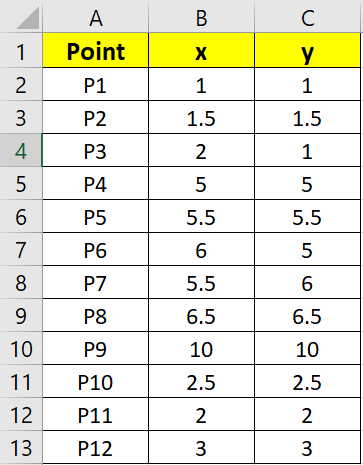Introduction to Clustering Algorithms
DBSCAN (Density-Based Spatial Clustering of Applications with Noise) is a clustering algorithm in machine learning used to group similar data points based on their density. Unlike classification algorithms that work with labeled data, clustering algorithms like DBSCAN work with unlabeled data, where the output is unknown, and the goal is to group similar points into clusters.
What Makes DBSCAN Special
DBSCAN is special because it has several unique features. These include:
- Grouping points that are closely packed (high density) into clusters.
- Identifying noise (outliers) that don’t belong to any cluster.
- Not requiring you to specify the number of clusters beforehand, unlike K-Means.
Real-World Applications
Imagine you’re a security supervisor in a mall, watching CCTV footage. You notice crowds forming outside certain shops. Some areas have dense crowds, some have sparse groups, and a few people are standing alone. DBSCAN helps you identify these dense crowds (clusters) and spot lone individuals (noise).
How DBSCAN Works
DBSCAN uses two main parameters:
- Epsilon (ε): The maximum distance between two points for them to be considered part of the same cluster (like the radius of a circle around a point).
- Minimum Points (MinPts): The minimum number of points within ε distance to form a dense region (e.g., how many people make a crowd).
Understanding the Parameters
To apply DBSCAN effectively, it’s crucial to understand how to set these parameters. Epsilon (ε) determines the reach of the cluster, while MinPts determines the density required for a cluster to form. By adjusting these parameters, you can customize DBSCAN to suit your specific needs, whether it’s analyzing customer behavior, identifying patterns in data, or detecting anomalies.
Conclusion
DBSCAN is a powerful clustering algorithm that helps group similar data points based on density, making it useful for a wide range of applications. Its ability to identify noise and not require a predefined number of clusters makes it versatile and effective in real-world scenarios. By understanding how DBSCAN works and how to adjust its parameters, you can unlock its full potential for data analysis and pattern recognition. Whether you’re working in security, marketing, or any field that involves data analysis, DBSCAN is a valuable tool to have in your toolkit.

